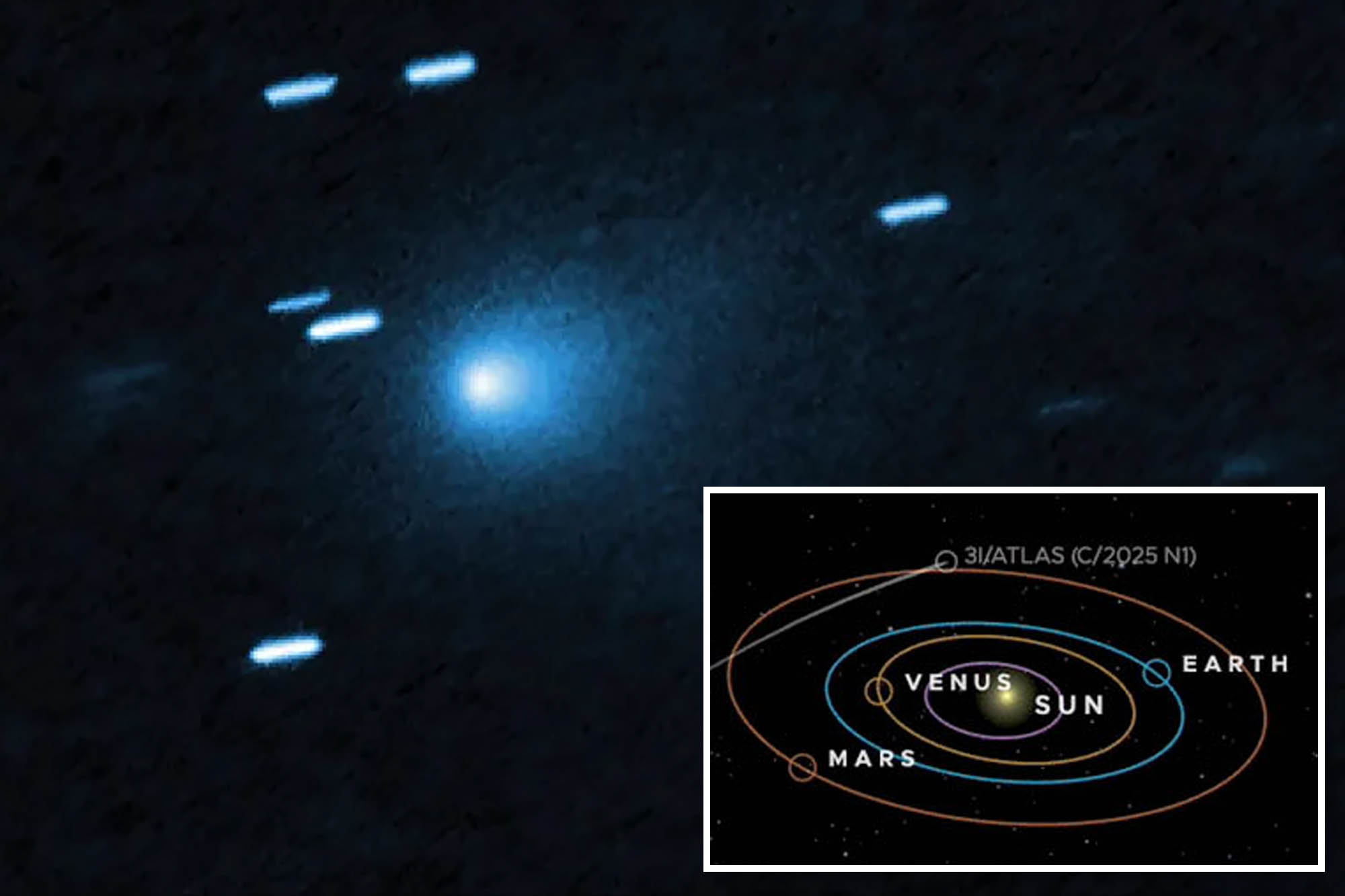Science
Interstellar Object 3I/ATLAS Sparks Debate Over Possible Alien Engine

The interstellar object known as 3I/ATLAS has raised eyebrows among scientists following observations of its unusual acceleration and color changes. According to Avi Loeb, an astrophysicist at Harvard University, these characteristics might suggest the presence of an artificial craft rather than a natural comet. The object accelerated non-gravitationally as it passed near the Sun, and its observed color shifted to a blue hue, described as “bluer than the Sun.”
This week, NASA reported the object’s non-gravitational acceleration, indicating significant outgassing. Such behavior is typically associated with comets, which often lose mass and produce a visible plume of debris. Loeb speculated in a recent paper that this outgassing, coupled with the striking blue appearance, could be indicative of an engineered propulsion system. He wrote, “This might also explain the report on 3I/ATLAS getting ‘bluer than the Sun.’”
The closest approach of 3I/ATLAS to Earth is scheduled for December 19, 2023, when it will pass at approximately 167 million miles from our planet. This event presents a key opportunity for researchers to gather data and ascertain whether the object is indeed a comet or possibly an artificial construct. Loeb noted that if no significant gas cloud is detected around 3I/ATLAS during this close encounter, it may further support the theory of a propulsion system.
During its recent passage near the Sun, Earth-based telescopes were unable to capture direct images of 3I/ATLAS due to its position relative to the Sun. However, multiple spacecraft orbiting the Sun managed to observe the object, noting a “rapid brightening” and its distinctive blue hue. This color change is particularly intriguing, given that earlier observations indicated the object had a reddish and subsequently greenish appearance.
Loeb criticized NASA for not releasing images taken by the Mars Reconnaissance Orbiter’s HiRISE camera during its close flyby of Mars in early October. Reports suggest that these anticipated images will not be made available until after the government reopens.
In response to growing public interest and speculation about the nature of 3I/ATLAS, Sean Duffy, NASA’s Acting Administrator, reassured the public via social media that the object poses no threat. “NASA’s observations show that this is the third interstellar comet to pass through our solar system,” he stated. “No aliens. No threat to life here on Earth,” he added.
As researchers prepare for the upcoming close pass of 3I/ATLAS, the scientific community remains divided on its implications. Whether this interstellar object is a natural phenomenon or something more enigmatic will depend on further observations and analyses in the weeks to come.
-

 Lifestyle3 months ago
Lifestyle3 months agoLibraries Challenge Rising E-Book Costs Amid Growing Demand
-

 Sports3 months ago
Sports3 months agoTyreek Hill Responds to Tua Tagovailoa’s Comments on Team Dynamics
-

 Sports3 months ago
Sports3 months agoLiverpool Secures Agreement to Sign Young Striker Will Wright
-

 Lifestyle3 months ago
Lifestyle3 months agoSave Your Split Tomatoes: Expert Tips for Gardeners
-

 Lifestyle3 months ago
Lifestyle3 months agoPrincess Beatrice’s Daughter Athena Joins Siblings at London Parade
-

 World3 months ago
World3 months agoWinter Storms Lash New South Wales with Snow, Flood Risks
-

 Science3 months ago
Science3 months agoTrump Administration Moves to Repeal Key Climate Regulation
-

 Business3 months ago
Business3 months agoSoFi Technologies Shares Slip 2% Following Insider Stock Sale
-

 Science2 months ago
Science2 months agoSan Francisco Hosts Unique Contest to Identify “Performative Males”
-

 Science3 months ago
Science3 months agoNew Tool Reveals Link Between Horse Coat Condition and Parasites
-

 Sports3 months ago
Sports3 months agoElon Musk Sculpture Travels From Utah to Yosemite National Park
-

 Science3 months ago
Science3 months agoNew Study Confirms Humans Transported Stonehenge Bluestones









